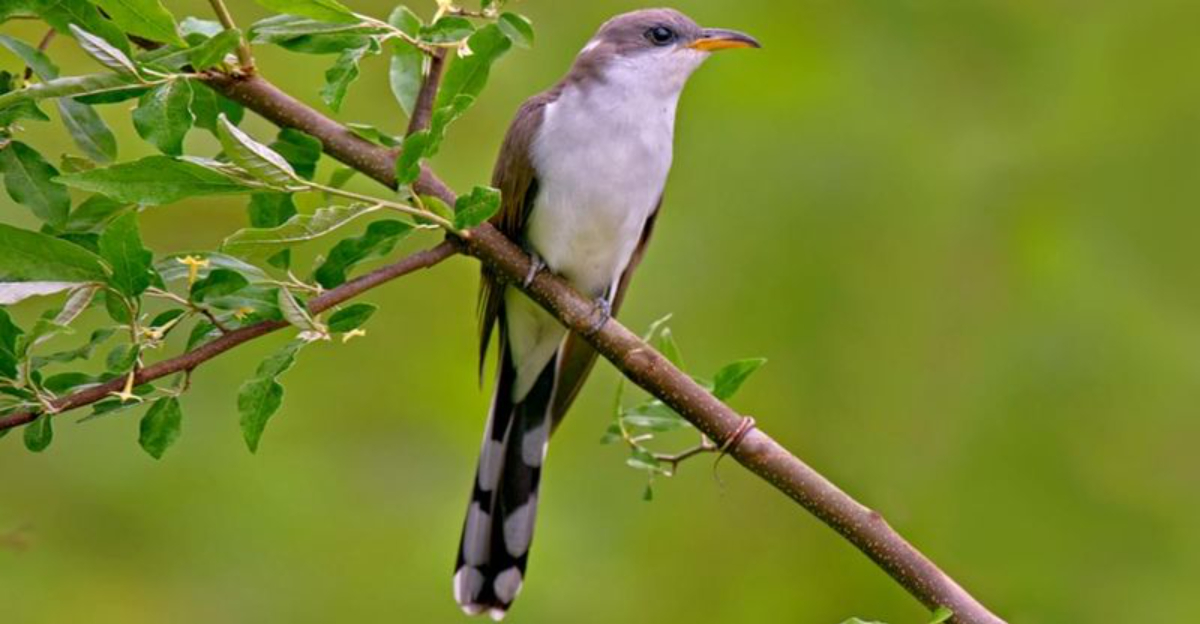California’s landscapes are home to some of the most fascinating and endangered bird species in America.
From majestic condors soaring above to graceful coastal birds skittering along the shore, these rare birds are fighting against habitat loss and climate change.
Grab your binoculars and come along on a birdwatching adventure to some of California’s best spots, where you might catch a glimpse of these feathered wonders before they vanish.
California Condor – Pinnacles National Park
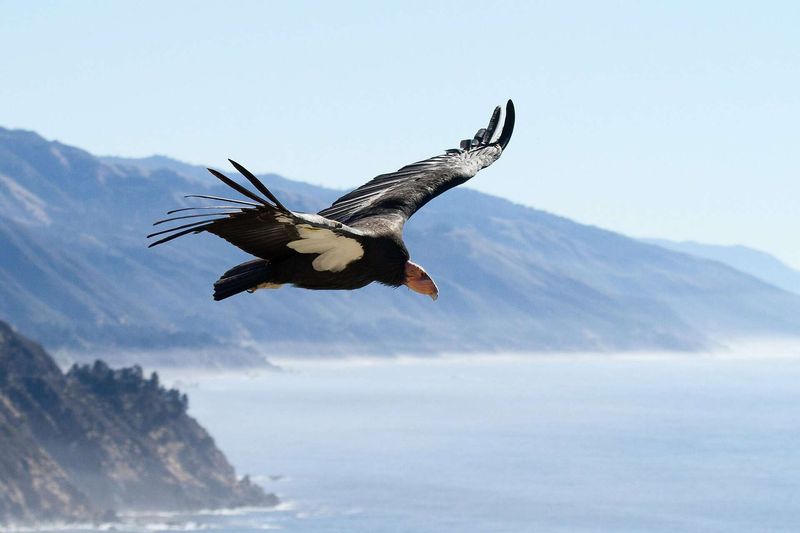
North America’s largest bird soars majestically above Pinnacles National Park’s dramatic rock formations. With nearly 10-foot wingspans, these prehistoric-looking vultures glide on thermal currents, scanning for carrion with remarkable efficiency.
Once down to just 22 individuals in the 1980s, condors have clawed their way back from the brink of extinction through intensive conservation efforts. Their bald, reddish heads serve a practical purpose—helping them stay clean while feeding on carcasses.
Visit the High Peaks Trail early morning for your best chance at spotting these magnificent birds. Park rangers often carry tracking equipment and can point out recently spotted individuals—each bearing numbered wing tags from the recovery program.
California Gull – Mono Basin Scenic Area
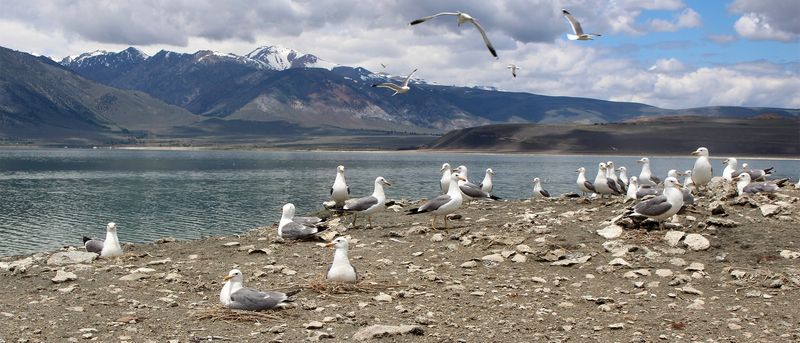
Mark Twain once called Mono Lake “one of the strangest freaks of Nature.” Its otherworldly limestone tufa towers provide ideal perching spots for thousands of California Gulls who’ve nested here for centuries.
These medium-sized gulls, with yellow bills adorned with distinctive red spots, make an epic journey to this alkaline lake each spring. Unlike their trash-scavenging coastal cousins, Mono Lake’s gulls feast primarily on the lake’s abundant alkali flies and brine shrimp.
The South Tufa area offers front-row seats to one of California’s most impressive breeding colonies. Time your visit between April and August to witness adults tending fluffy chicks on protected islands just offshore.
Yellow-billed Cuckoo – Sacramento River National Wildlife Refuge
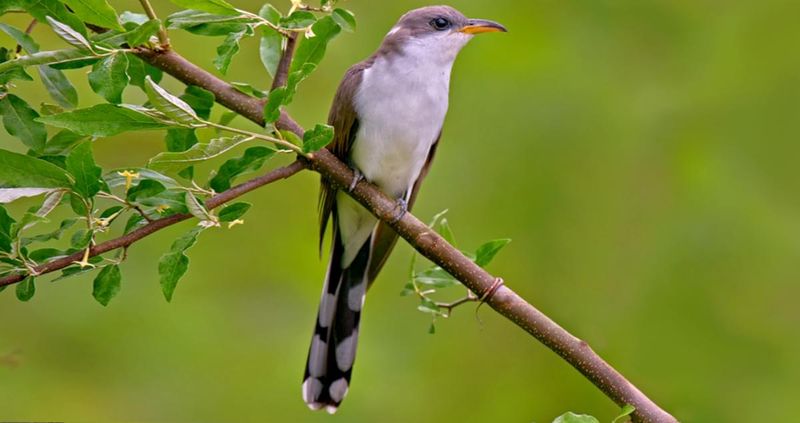
The haunting “kow-kow-kow” call might be your first clue to this secretive bird’s presence. Yellow-billed Cuckoos skulk through dense riverside forests, their slender bodies and long tails perfectly adapted for navigating thick foliage.
I’ll never forget my first sighting—just a flash of rufous wings and that distinctive yellow lower mandible disappearing into a cottonwood canopy. Western populations have declined dramatically as riparian habitats vanish.
Sacramento River NWR’s restoration efforts have created critical habitat corridors. Visit during June and July when breeding birds are most vocal. Patience pays off—bring a comfortable chair, sit quietly near willows and cottonwoods, and wait for these elegant birds to reveal themselves.
Western Snowy Plover – Point Reyes National Seashore
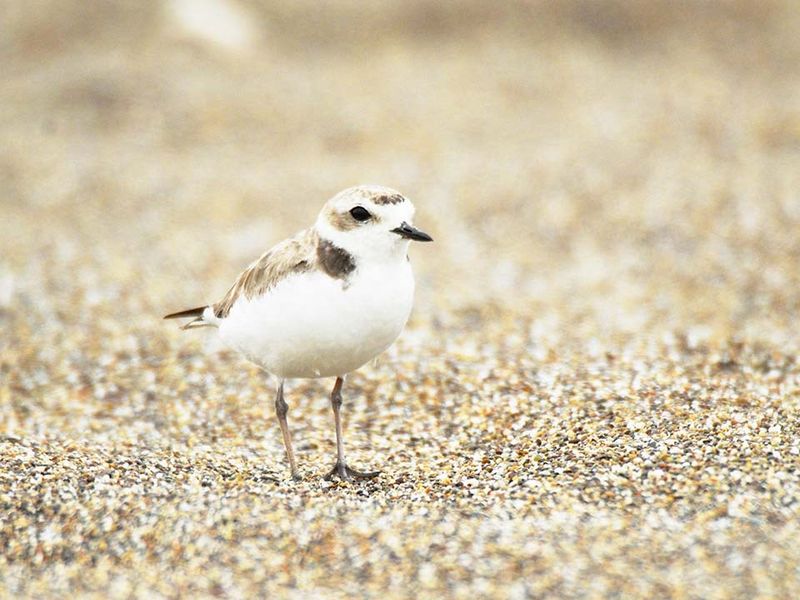
Barely larger than a sparrow, these sand-colored shorebirds practically disappear against the beach. Their survival strategy—freezing in place when threatened—makes them vulnerable to beachgoers who never notice them underfoot.
Point Reyes National Seashore maintains protected nesting areas where these tiny birds create simple scrapes in the sand for their speckled eggs. Watch for their unique stop-start running pattern as they hunt beach hoppers and small insects along the tideline.
Limantour Beach offers excellent viewing opportunities with minimal disturbance. Bring a spotting scope—these six-inch birds are challenging to see without magnification. Remember that closed beach sections aren’t inconveniences but lifelines for these critically endangered birds.
Least Tern – San Diego Bay National Wildlife Refuge
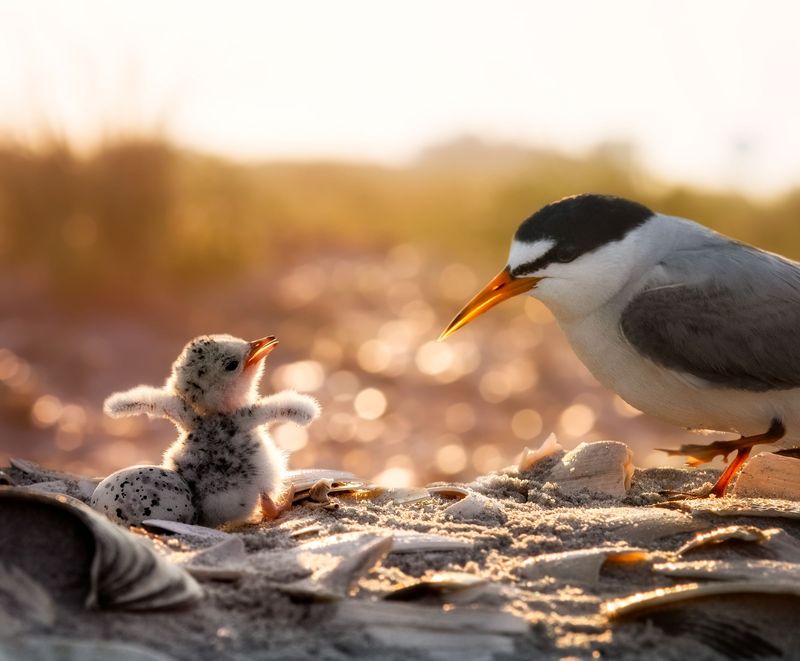
Aerial acrobats of the coastline, Least Terns plunge dramatically into shallow waters for tiny fish. America’s smallest tern species has a black cap, yellow bill, and the endearing habit of presenting fish to potential mates during courtship.
San Diego Bay NWR created specially designed nesting sites—essentially glorified sandboxes—where these endangered birds can raise young away from predators and human disturbance. Their colonies buzz with activity as parents shuttle back and forth delivering fresh catches to hungry chicks.
The refuge’s Bayfront Park offers viewing platforms where you can observe nesting colonies without disturbing them. Breeding season (May-August) brings the greatest spectacle, but remember these birds need space—photography with long lenses from designated areas only, please!
Tricolored Blackbird – Central Valley Wetlands
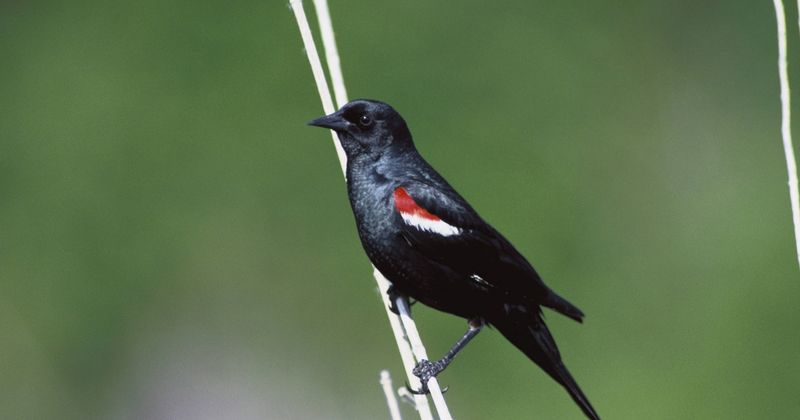
Imagine blackbird colonies so vast they once darkened the sky—that’s the Tricolored Blackbird’s historical presence in California’s Central Valley. Males have glossy black plumage with distinctive white and red shoulder patches that flash brilliantly during display flights.
These highly social birds build massive breeding colonies, sometimes exceeding 50,000 nests in a single location! Agricultural expansion has eliminated 95% of their wetland habitat, forcing colonies into vulnerable croplands where harvesting often destroys nests.
Merced National Wildlife Refuge provides protected wetlands where these birds thrive. Auto tour routes let you witness spectacular “blackbird tornados” as colonies take flight simultaneously. Dawn and dusk bring the most impressive displays and chorus-like vocalizations that must be experienced to be believed.
San Clemente Island Loggerhead Shrike – San Clemente Island
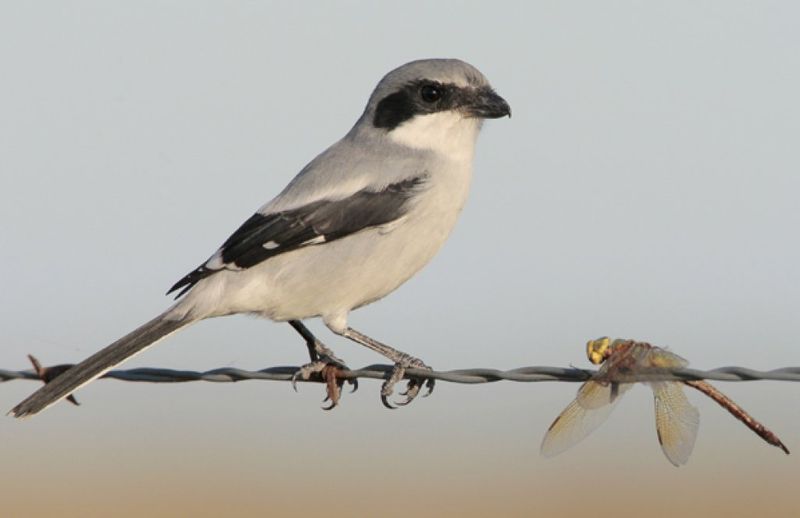
Known as “butcher birds” for their habit of impaling prey on thorns and barbed wire, these pint-sized predators pack serious attitude. The San Clemente Island subspecies evolved in isolation, developing slightly different markings and vocalizations from mainland shrikes.
Military ownership of the island initially threatened these birds but now provides unexpected protection. Navy conservation programs have helped the population rebound from just 14 individuals in 1998 to over 100 today through captive breeding and habitat restoration.
Access to San Clemente Island requires special permission due to military operations. However, organized natural history tours occasionally receive clearance. If lucky enough to visit, watch for these masked hunters perched prominently on exposed branches, scanning for lizards and large insects with remarkable vision.
Burrowing Owl – Carrizo Plain National Monument
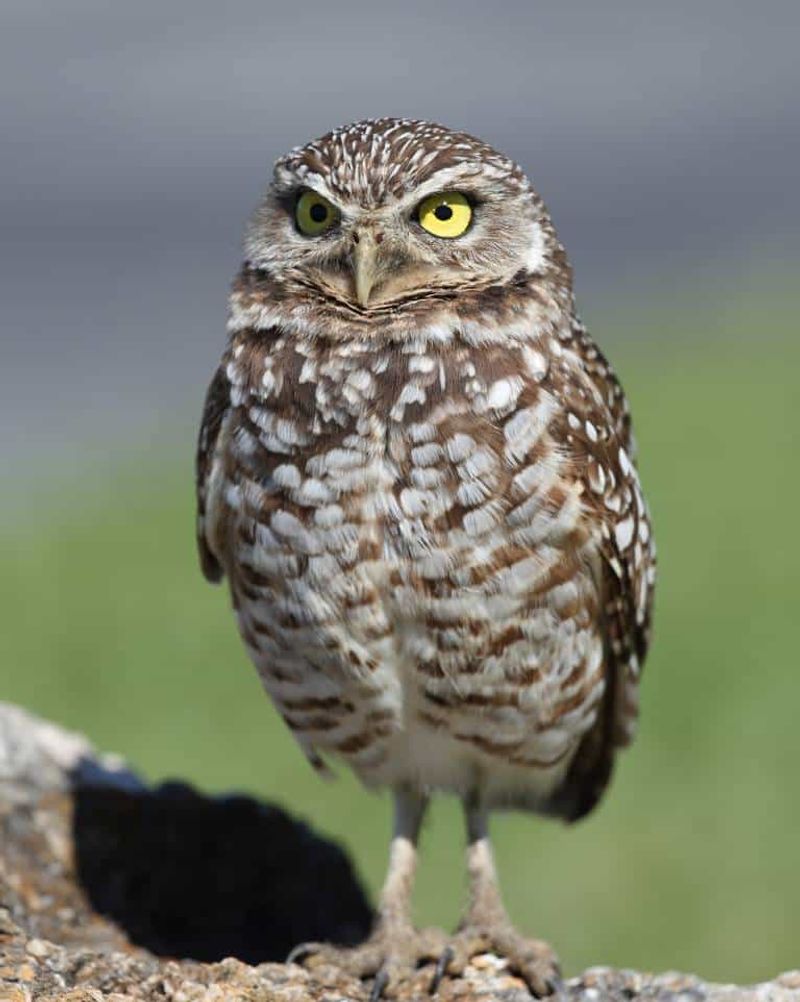
Unlike their tree-dwelling cousins, these charismatic little owls make their homes underground, often in abandoned ground squirrel burrows. Standing barely 9 inches tall on long, stilt-like legs, they bob comically when alarmed—a behavior that’s impossible not to find endearing.
Carrizo Plain’s vast grasslands provide ideal habitat where these owls hunt grasshoppers, beetles, and small rodents. Their daylight activity makes them unusually observable compared to most nocturnal owls.
Soda Lake Road cuts through prime owl territory, especially near the monument’s visitor center. Early morning finds them standing sentinel-like beside their burrows, yellow eyes alert to any movement. Listen for their distinctive “who-who” call that mimics a mourning dove’s coo—a clever bit of acoustic camouflage from these surprisingly intelligent birds.
Golden Eagle – Tehachapi Mountains
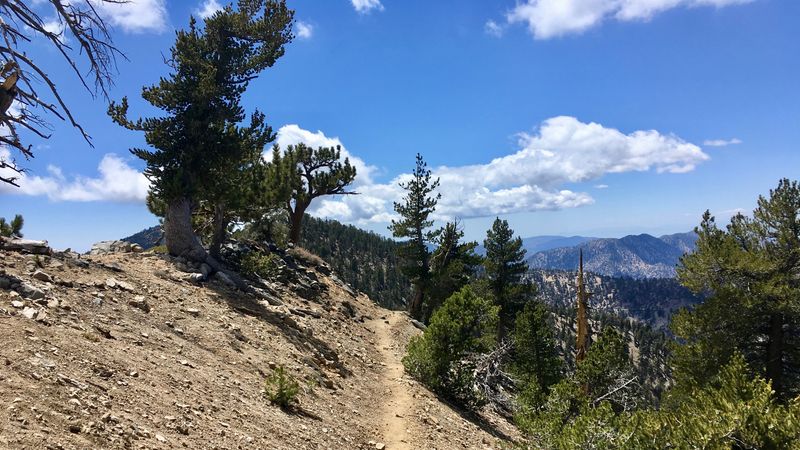
Few wildlife encounters match the heart-stopping thrill of seeing North America’s most powerful aerial predator in action. Golden Eagles command the skies above Tehachapi’s windswept ridges, their seven-foot wingspans casting moving shadows across the landscape below.
These magnificent hunters can spot jackrabbits from nearly two miles away and dive at speeds exceeding 150 mph. Their hunting territories span massive areas—up to 60 square miles per breeding pair.
The Pacific Crest Trail sections through Tehachapi provide excellent viewing opportunities, particularly near Cameron Road. Winter brings migratory eagles joining resident birds, increasing your chances of sightings. Bring quality optics and scan rocky outcroppings and tall pines where these majestic birds perch to survey their domains.
California Spotted Owl – Yosemite National Park
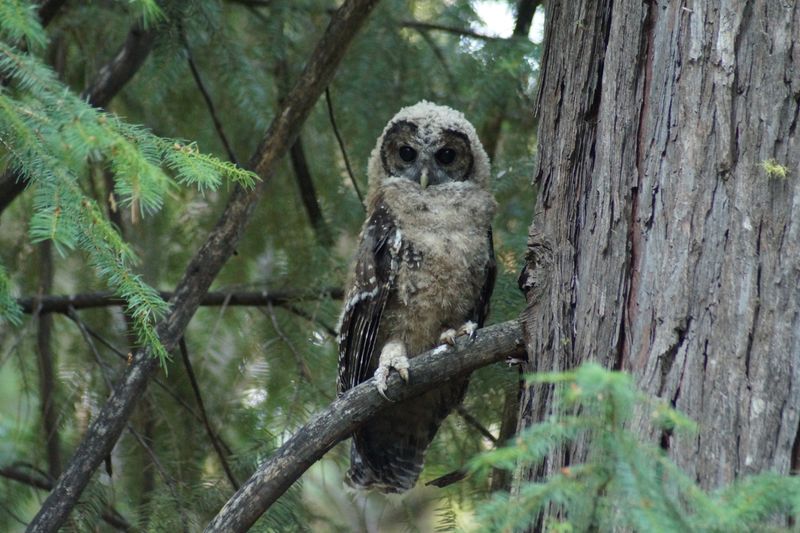
Ghost-like and elusive, these medium-sized owls represent old-growth forest health throughout the Sierra Nevada. Their signature three-note hooting call—hoo-hoo-hoooo—echoes through ancient trees, creating an unforgettable wilderness soundtrack.
California Spotted Owls require mature forests with multiple canopy layers and abundant dead trees for nesting. Yosemite’s protected groves provide critical habitat as logging continues to fragment populations elsewhere.
Mariposa Grove’s giant sequoias harbor several known territories. Rangers occasionally lead specialized owl prowls during summer months—the only reliable way to encounter these secretive birds. Even without sightings, walking among thousand-year-old trees where these rare owls hunt flying squirrels connects you to California’s wild heritage in profound ways.
